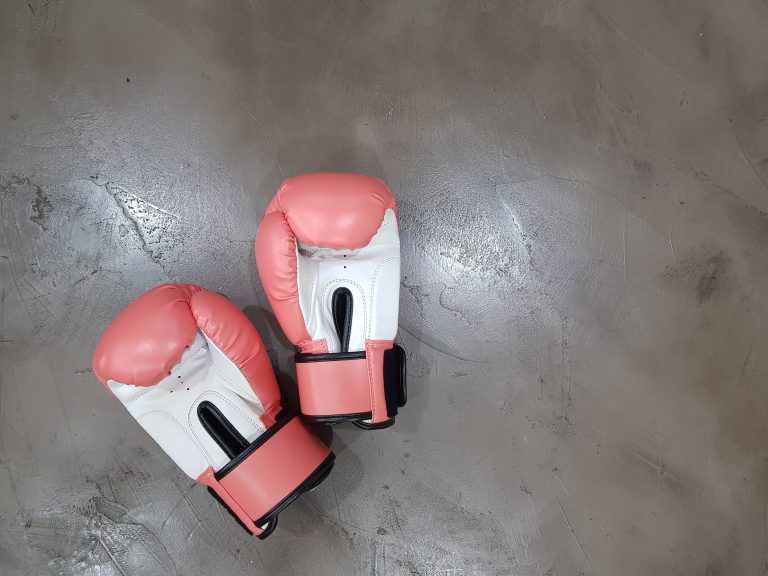What Are Karate Belts in Order?
Karate is a martial art that has its roots in Okinawa, Japan. It is a form of self-defense that involves punches, kicks, and strikes. One of the most identifying features of karate is the use of colored belts to represent a student’s level of proficiency. But what do the karate belts mean, and what is the order in which they are earned? In this blog post, we will answer those questions and provide an overview of the ranking system of karate belts.
The History of Karate Belts
The colored belt ranking system used in karate was first introduced in the 1880s by Jigoro Kano, the founder of Judo. Kano was looking for a way to distinguish between his students‘ skill levels, so he created a colored belt system. The concept was then adopted by other martial arts, including karate.
In the early days of karate, there were no belts, and students were only awarded white or black belts. As the popularity of karate grew, the need for a ranking system became apparent, and the colored belt system was introduced.
The Karate Belt System
Karate belts are typically made of cotton or silk, with the color indicating the student’s rank or level. There are ten levels or grades in the karate belt system, starting with white and ending with black. The order of the karate belts, from lowest to highest, is as follows:
White Belt
The white belt is the starting point of the karate belt system. It signifies a student’s innocence, as they have no prior knowledge of karate. White is also the color of the canvas used for the mats in the karate dojo.
Yellow Belt
The yellow belt shows that a student has started to develop knowledge and skill in karate. At this level, students learn basic strikes, blocks, and kicks.
Orange Belt
The orange belt indicates that a student has progressed further in their training and has a better understanding of karate techniques. Students at this level are expected to have a good grasp of the basic kata, which are predetermined movements.
Green Belt
The green belt represents a significant step in a student’s progression through the karate grading system. Students at this level have demonstrated proficiency in essential karate techniques and are expected to be able to perform more complicated kata.
Blue Belt
The blue belt is the next step up from the green belt and is awarded to students who have mastered the foundational karate techniques. Students at this level are expected to have a good understanding of kata and the application of techniques in sparring.
Purple Belt
The purple belt is a significant milestone in a student’s karate journey, and it represents expert skill in both kata and sparring. Students at this level are expected to demonstrate a high level of technique, precision, and control.
Brown Belt
The brown belt indicates that a student is closing in on the level of expertise required to obtain a black belt. Students at this level continue to refine their techniques, and they begin to develop their unique style.
Black Belt
The black belt is the most prestigious level in the karate grading system, and it is the ultimate goal for many students. Earning a black belt takes years of dedicated practice and commitment to the martial art. Black belts are often seen as role models within the karate community and are expected to lead by example and demonstrate a high level of skill and proficiency.
Dan Ranks
After the black belt, there are several levels of expertise, known as dan ranks. These ranks range from 1st Dan to 10th Dan, with each level demonstrating an increased level of mastery and expertise.
Summary
Karate belts are an essential part of the martial art’s ranking system. They represent a student’s level of proficiency in karate, from the beginner white belt to the expert black belt. Each level of the karate belt system requires a significant amount of commitment, practice, and dedication, and each belt represents a student’s journey toward mastering the art of karate.
What are Karate Belts in Order?
Introduction
Karate is a popular martial art that has been practiced for centuries. It is known for its strong emphasis on discipline, self-control, and self-defense techniques. The practice of karate involves various movements, strikes, and blocks that are combined in unique ways to develop an individual’s physical abilities and mental focus. One of the most iconic and essential elements of karate involves earning belts. The belts signify rank and an individual’s skill level in the art. In this article, we will explore the most frequently asked questions about karate belts.
What are karate belts in order?
Karate belts are a means of displaying rank and measuring skill level in the martial art. There are ten ranks or grades in karate, and each rank is depicted by a different colored belt. The order of karate belts from lowest to highest rank is as follows:
1. White Belt
2. Yellow Belt
3. Orange Belt
4. Green Belt
5. Blue Belt
6. Purple Belt
7. Brown Belt
8. Red Belt
9. Black Belt
10. Dan Belts
As a beginner, you will begin with a white belt, and through practice and dedication, you can move up the ranks, eventually earning the prestigious black belt.
What is the significance of the color of karate belts?
The color of the karate belt signifies the level of proficiency of the student. White represents the starting point, and as a student progresses, the color of the belt will change. Each belt color represents the advancement of the learning process and the student’s ability to master specific techniques. A student learns a new set of skills with each belt color, and as such, it demonstrates their level of progression.
What is a Dan belt?
Dan belts come after an individual has earned a black belt. Dan gives individuals greater respect than a standard black belt since they demonstrate expertise in the martial art. The first Dan belt earned is typically referred to as a Shodan (a first-degree black belt). The more Dan belts you earn, the higher your expertise is in this art of self-defense.
How long does it take to earn a black belt in karate?
Earning a black belt in karate requires perseverance, dedication, and discipline. The amount of time required to achieve a black belt rank varies from person to person. It depends on several factors, such as the student’s level of commitment, training schedule, natural ability, and other aspects. Some individuals may take several years, while others may take several months.
What are Karate Belts in Order – A Comprehensive Guide
Introduction
Karate is a martial art that originated from Okinawa, Japan in the early 20th century. The practice involves a combination of mental and physical training to develop self-defense skills, improve strength and flexibility, and promote overall well-being. Karate practitioners, also known as karateka, progress through different levels of skill and knowledge by earning colored belts, with the ultimate goal of achieving the coveted black belt. In this blog post, we will explore the different karate belts in order, their meanings, and requirements to earn them.
History of Karate Belts
The belt ranking system in karate was introduced by Jigoro Kano, the founder of judo, in the 1880s. He adopted it from the traditional Japanese practice of using different colors and patterns of fabric to identify the level of proficiency in different crafts, such as tea ceremony and flower arrangement. The belt ranking system was later incorporated into karate by Gichin Funakoshi, the founder of Shotokan karate, in the 1920s.
At the time, there were only two belt colors – white and black – with white representing the beginner and black representing the expert. The intermediate levels were not explicitly recognized by a colored belt but were distinguished by a black belt with a white stripe. It wasn’t until the 1950s that Master Jhoon Rhee first introduced the colored belts, which helped to distinguish the different skill levels and provide motivation for karate practitioners to progress through the ranks.
Understanding the Karate Belt System
The karate belt system consists of a series of colored belts, each representing a different level of proficiency and knowledge in the art. The order in which the belts are ranked, from beginner to advanced, varies depending on the style of karate being practiced. However, the following is the most common belt order in karate, from lowest to highest:
White Belt
The white belt represents the beginning level in karate. It signifies purity and innocence and represents a new beginning in the journey to becoming a black belt. As a white belt, the focus is on learning and mastering the fundamental techniques, such as stances, kicks, punches, and blocks.
Yellow Belt
The yellow belt represents the second level in karate. At this stage, the focus is on gaining a deeper understanding of the basic techniques and developing better control and coordination. The yellow belt serves as a transition point from the beginner level.
Orange Belt
The orange belt represents the third level in karate. At this stage, karateka start to develop their own unique style and personality as a martial artist. They begin to learn more complex techniques, such as spinning kicks and multiple defensive strikes.
Green Belt
The green belt represents the fourth level in karate. At this stage, karateka begin to hone their skills and focus on their strengths. They also start to explore the deeper aspects of karate, such as its philosophy and principles.
Blue Belt
The blue belt represents the fifth level in karate. By this stage, karateka have achieved a high level of proficiency in the basic techniques and are ready to take on more advanced techniques, such as jumping kicks and combinations.
Purple Belt
The purple belt represents the sixth level in karate. At this stage, karateka must demonstrate their mastery of the basic techniques and show a deeper understanding of the principles of karate. They also start to teach and mentor less experienced karateka.
Brown Belt
The brown belt represents the seventh level in karate. At this stage, karateka are considered to be advanced students and have a high level of technical and mental skill. They are expected to demonstrate leadership qualities and serve as role models for other karateka.
Black Belt
The black belt represents the highest level of proficiency in karate. It signifies a mastery of the fundamental techniques and principles of the art and represents the beginning of the journey towards further refinement and perfection. It is important to note that obtaining a black belt does not signify the end of one’s training – it is only the beginning of a lifelong journey towards self-improvement and mastery.
Conclusion
The karate belt system provides a structure and framework for karateka to progress through the ranks and achieve mastery in the art. The colored belts signify different levels of proficiency and knowledge, with the ultimate goal of achieving the black belt. While the specific ranking system may vary depending on the style of karate being practiced, the basic hierarchy remains the same. By understanding the different karate belts in order and their meanings, karateka can track their progress and work towards achieving their goals.
Inhaltsverzeichnis






